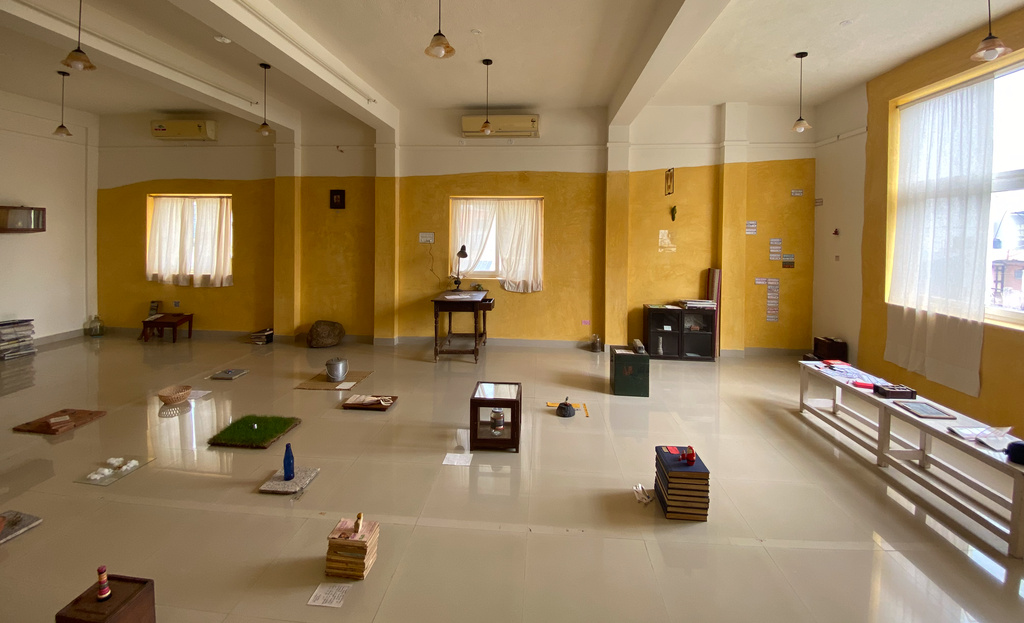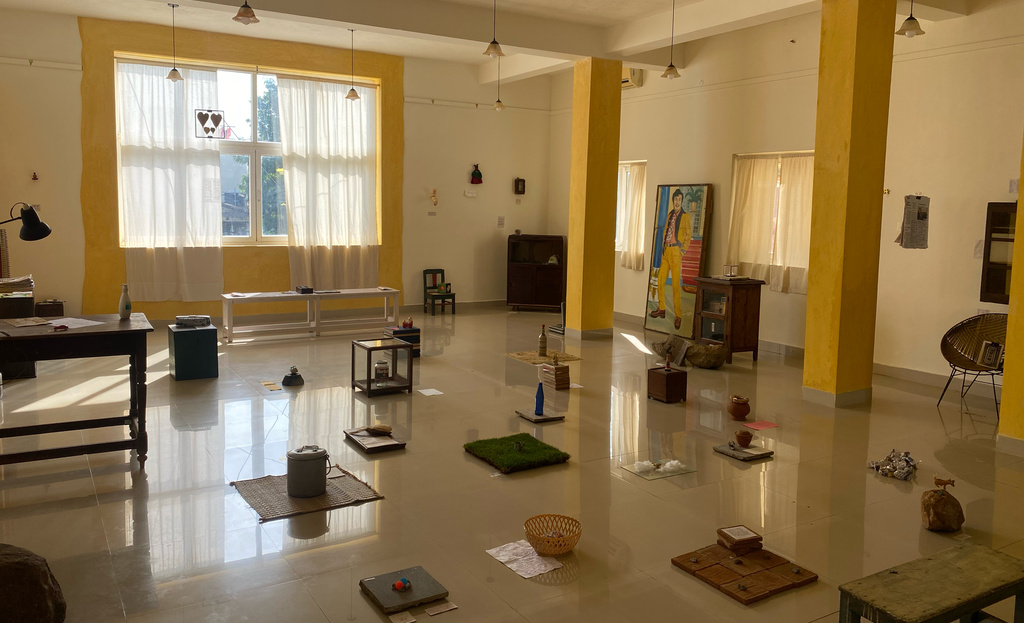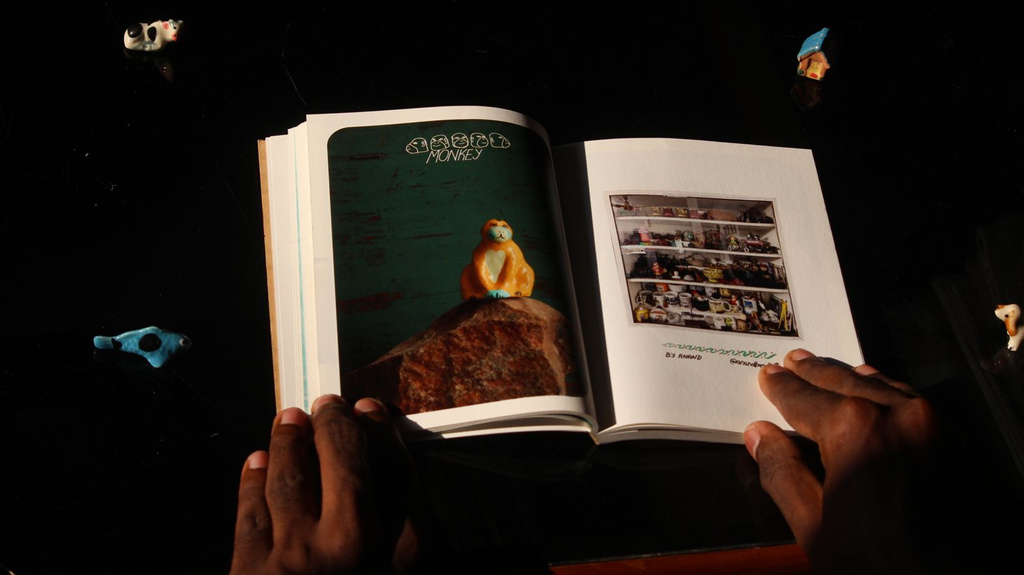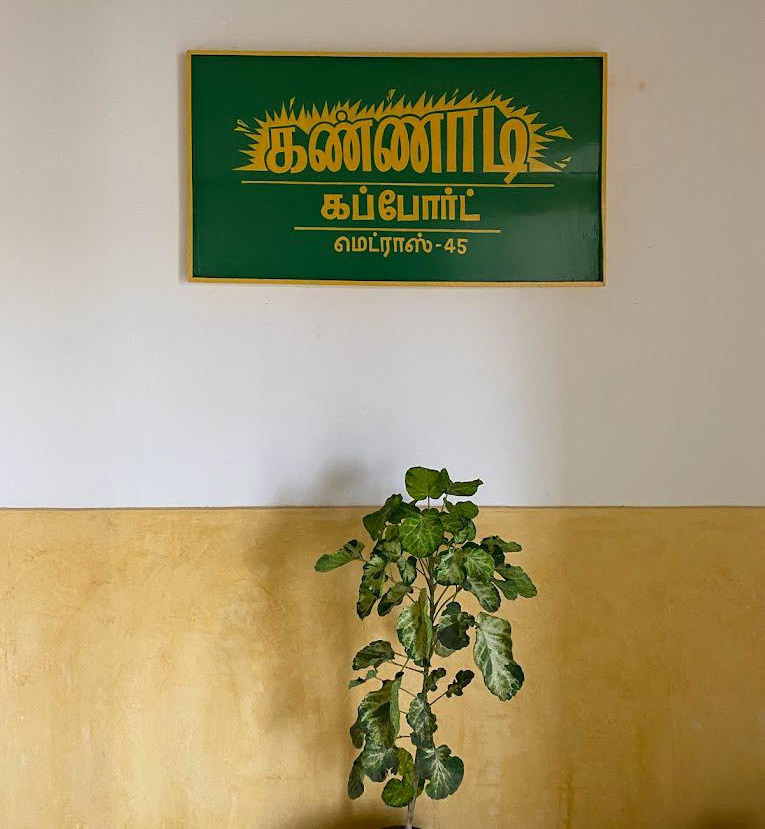- Kannadi Cupboard Launch show
- Kannadi Cupboard Launch show
Prasanna and Keerthana Alageshan gathered images and objects from glass cabinets across India to reflect the gamut of domestic preciousness.
Every time we asked our grandfather about a missing object, without a flinch, he’d point us to the glass cabinet in the living room. He fondly calls it the “Kannadi Cupboard.” Over time, this name stayed with us, and the function of the cabinet kept evolving, too. When we sat down to name the gallery space my brother and I had been conceiving, it felt very natural for us to return to this name and the memory attached to it. Thus, Kannadi Cupboard fit well as a name and the spirit of the space we envisioned. The name itself holds so many layers: the residue of colonial language, the natural amalgamation of Tamil and English, and the way memory is deeply instilled in language. But beyond the name, it’s the glass cabinet itself that’s always fascinated us. These cabinets are commonly found in most Indian households, serving as a casual, personal gallery. Inside, there’s usually a mix of things like trophies, wedding photos, religious idols, children’s toys, house keys, and abandoned letters, all unintentionally put together but carrying deep emotional value for the family. In a way, they run parallel to the concept of Wunderkammers from Renaissance Europe.
We believe that safe and nurturing spaces like this have the potential to bring out a more inclusive community of makers and viewers to grow alongside.
Metaphorically, this simple domestic cabinet-gallery fits well with what we had hoped to build with the space. The core of the space is to look past the existing white-box gallery format for displaying and viewing art and design. With white-box galleries being the dominant form of experiencing human expression in Chennai, there seems to be a sense of hostility, and they often appear exclusionary to regional ways of displaying and sharing artwork. Kannadi Cupboard is our response to this imbalance by creating a space that is accommodating of all expressions and one that feels grounded in its nature. A space that doesn’t look at its own culture from an alien perspective. A space where regional expressions are not displayed as commodities but experienced as a part of living. We believe that safe and nurturing spaces like this have the potential to bring out a more inclusive community of makers and viewers to grow alongside.
To explore this idea, we reached out to fifty art and design practitioners from across India with a simple request: to send us an image of a glass cabinet they had encountered, and to share one object they’d like to keep in our community cupboard. The response was an overwhelming collection of photographs and objects that evoked humour, intimacy, nostalgia, and surprise. These entries became the basis of our first photobook, launched along with the gallery. By compiling them together, we began to notice how individual and collective expressions co-exist in these glass cabinets, and how both deserve to be equally valued. There is no collective cupboard without individuals coming together to express themselves.
- Kannadi Cupboard Photobook
- Kannadi Cupboard Photobook
Each entry in the photobook offered a small peek into the lives, memories, and value systems of the people who contributed to it. The objects they chose were often simple yet highly meaningful, like a set of seven stones used in childhood games, a miniature doll modelled after a beloved pet, treasured toys from years past, an empty jar, or even a handcrafted candle made by local artisans. These are just a handful of the fifty entries we received, each one layered with emotions. All of them were equally fascinating, personal, and evocative in their own way.
Beyond the individual stories, a collective language also became noticeable. Bringing together all of their expressions within the photobook, it turned out to be a cabinet in printed form, of sorts. The layers of the photobook reflect what the gallery aspires to be: a container of many worlds that exist within, without being linearised or flattened. This project reminded us that collecting is always a political act, but it can also be an act of curiosity, solidarity, and sensitivity. Kannadi Cupboard is not just a space to look at artwork externally. It is an invitation for people to come together, express themselves, see themselves in others, and exchange experiences from within.
As we stood inside the gallery on the day of the launch, surrounded by family, friends, neighbours, fellow makers, and inquisitive visitors, it was heartwarming to see the space do what it was meant to—not just to view artwork, but to move around, find reflections of oneself, build conversations, and recognise warmth. Some people lingered over the photobook section, while others were busy engaging with our screen-printed cupboard cards, filling them with their imagination. Meanwhile, a few were on a long journey into their memories, attached to the displayed objects. Many entered the space clueless about what was happening and ended up leaving behind so many personal stories with us.
About Keerthana Alageshan
 I’m Keerthana, a Creative Associate at Kannadi Cupboard, a gallery based in Chennai, India. As part of my master’s program, I worked on a book that compiled stories connected to handcrafting traditions in Tamil households. I’m now looking to expand this research further, continuing to explore the cultural, emotional, and material histories instilled in these everyday crafting practices. Follow @kannadi.cupboard
I’m Keerthana, a Creative Associate at Kannadi Cupboard, a gallery based in Chennai, India. As part of my master’s program, I worked on a book that compiled stories connected to handcrafting traditions in Tamil households. I’m now looking to expand this research further, continuing to explore the cultural, emotional, and material histories instilled in these everyday crafting practices. Follow @kannadi.cupboard






